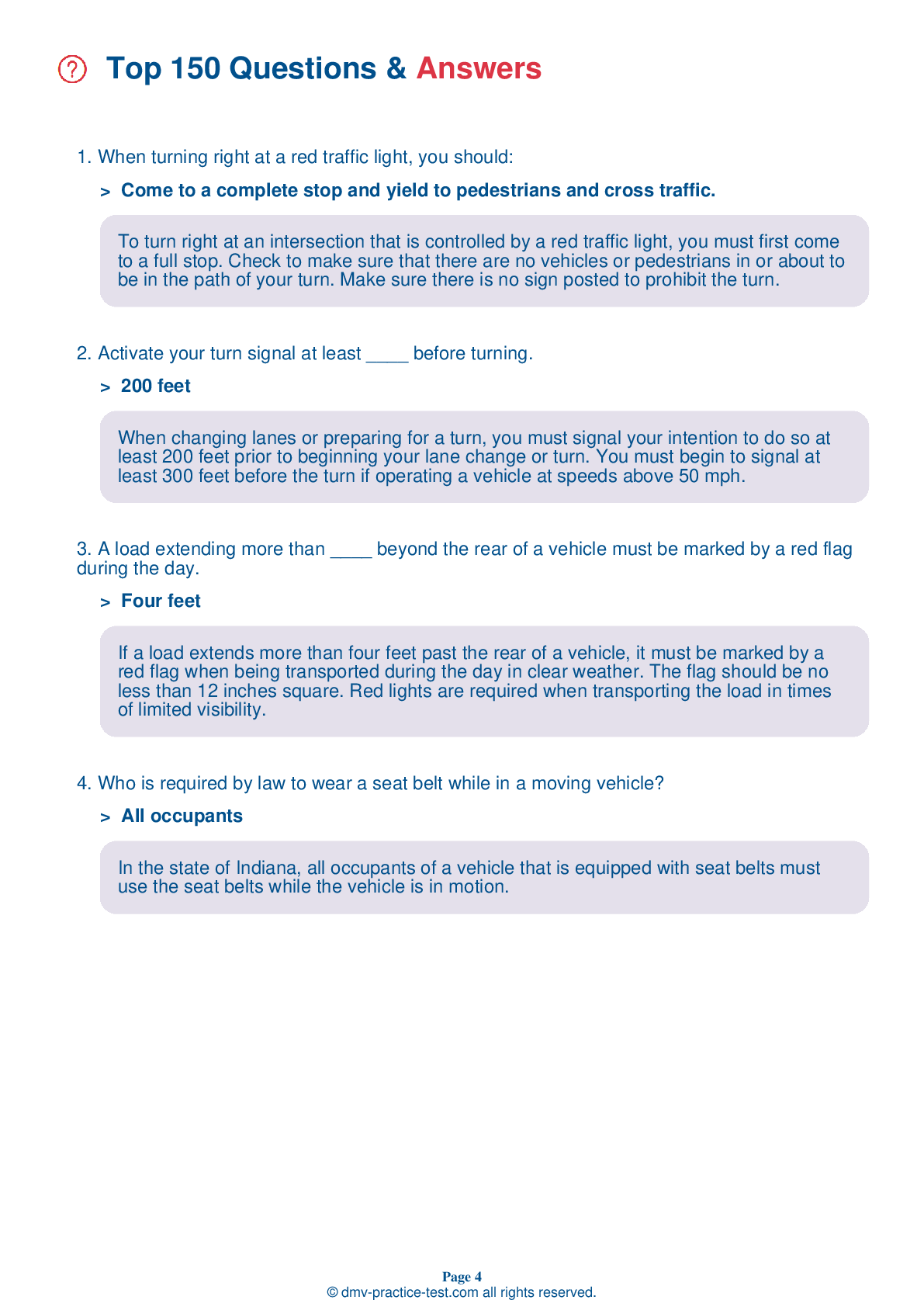FREE Indiana DMV Practice Test #15 Page 5 of 5
This set of Indiana DMV practise tests has been updated for January 2026. It includes questions based on the Indiana Driver Handbook's most significant traffic signals and laws for 2026. Use actual questions that are very similar (often identical!) to the DMV driving permit test and driver's licence exam to study for the DMV driving permit test and driver's licence exam.
On the practise exam, each question gets a tip and explanation to help you remember the concepts. The written component of the official Indiana DMV test will include questions about traffic rules, traffic signs, and driving statutes, as well as information from the Driver Handbook.
To obtain a passing grade, you must correctly answer 44 of the 50 questions. Take our DMV practise exam to help you prepare for your Indiana instruction permit or driver's licence.
The DMV exam is available in several languages.
Using any kind of testing assistance will result in an automatic fail, and the DMV may take additional action against your driver's licence, so stay away from it.
39 . You must yield to other drivers:
You must yield to other drivers when entering a street from an alley, driveway, or garage. You must also yield to pedestrians who are on an intersecting sidewalk.
40 . Your first response to reduced visibility should be:
Reducing your speed should be your first response to decreased visibility and dangerous road conditions.
41 . This sign means:

Warning signs prepare drivers for upcoming road conditions and hazards and are usually yellow with black markings. This sign tells drivers that there is an upcoming stop sign and that they should prepare to come to a complete stop before proceeding.
42 . This sign means:

Warning signs prepare drivers for upcoming road conditions and hazards and are usually yellow with black markings. This sign alerts drivers to potential traffic merging from the right. Drivers should prepare to allow the traffic to merge safely.
43 . Always signal when:
Always use the proper turn signal when changing lanes, pulling into or out of a parking space, or pulling into traffic from an alley or parking area. Communicate with other drivers on the road to help prevent accidents.
44 . On long trips, you can prevent drowsiness by:
To prevent drowsiness on long trips, you should schedule regular stops. Give yourself time to rest and stretch, even if you are not feeling tired.
45 . Which of the following statements about railroad crossings is true?
You must stop at a railroad crossing when directed to do so by a flagger, stop sign, or warning devices, such as gates or flashing lights. Not all railroad crossings are equipped with such devices. It is against the law to drive around lowered railroad crossing gates.
46 . This sign means:

Regulation signs regulate traffic speed and movement, displaying rules which drivers must obey. This sign tells drivers the direction in which they must drive when turning onto a one-way street.
47 . Roads freeze quickly when they are:
In cold or wet weather, you should take special care on sections of road that are shaded by trees or buildings. These areas freeze more quickly than the rest of the road and are the last parts of the road to dry.
48 . This sign means:

This sign indicates that the road that you are on intersects with a divided highway. A divided highway is two one-way roadways separated by a median or guide rail.
49 . If traffic signals at an intersection are not functioning due to a power outage:
If a traffic light at an intersection is not functioning due to a power outage, yield to other drivers in the same manner as you would when approaching a four-way stop. When it is your turn, proceed through the intersection with caution.
50 . ____ limit your concentration, perception, judgment, and memory.
Even the smallest amount of alcohol will reduce your concentration, perception, judgment and memory, and your driving skills will suffer. No one can drink and drive safely.
See the exact questions that will be on the 2026 Indiana DMV exam.
99.2% of people who use the cheat sheet pass the FIRST TIME
LT gives us an insight on how the cheat sheet provided her with all the study questions she needed before taking her test.
Joe initially studied with the handbook and failed his test, he eventually found us online, studied and pass his test the first time around.



